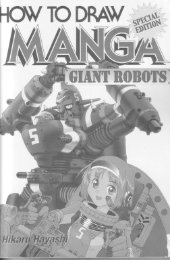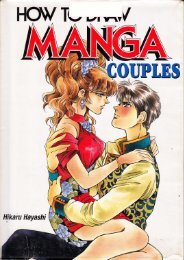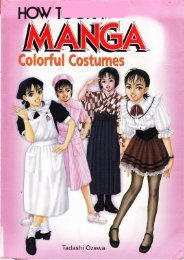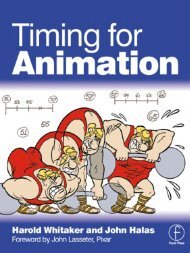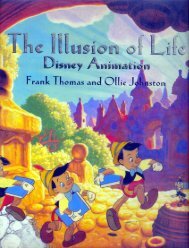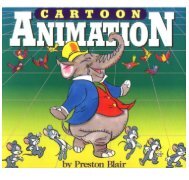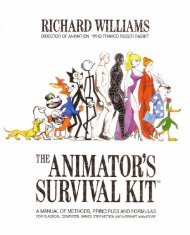Character animation crash course
Create successful ePaper yourself
Turn your PDF publications into a flip-book with our unique Google optimized e-Paper software.
ACTING IN ANIMATION -PART 1: GETTING STARTED<br />
ll<br />
It's a perfect visual indication of the rhythms and different timings you can have in<br />
a scene before you even start drawing.<br />
• Believability vs. Realism<br />
The most important attribute your character can possess is that he exists on his own<br />
terms: that his actions are a result of his thought processes, and that he has a consistent<br />
weight and volume in space (and that these things are accepted by an audience<br />
without question so that they can concentrate more on his expressions and performance).<br />
His lip-sync and accents come from his personality and are believable for<br />
his character. (Chuck Jones: "Bugs' walk isn't realistic, but it's believable.") It's not<br />
about aping realism - it's about observation and caricature, utilized in such a way<br />
that it convinces an audience of your character's existence. It could be nobody else<br />
but that character.<br />
• Think in pantomime.<br />
A pantomime scene is automatically more difficult than a dialogue scene: A good<br />
soundtrack can very often carry lukewarm <strong>animation</strong>, and still convey humor or<br />
emotional content. ("Rocky and Bullwinkle" never had the time or budget for lavish<br />
<strong>animation</strong>; in fact, they cheaped it out. However, they spent their dollars wisely on<br />
great scripts and great voice talent.) Pantomime has no crutches- it is the animator,<br />
center stage, alone! If the scene works without sound in conveying emotions and<br />
physical properties, that's the acid test. (Jones: If the scene works without sound, it's<br />
<strong>animation</strong>. If you can tell what's going on without picture, it's radio.) Moreover, the<br />
types of things included in a good pantomime scene (strong attitude poses, good<br />
timing, establishing and breaking rhythms, change of attitude) are also the same<br />
types of things that shou ld be in a good dialogue scene.







